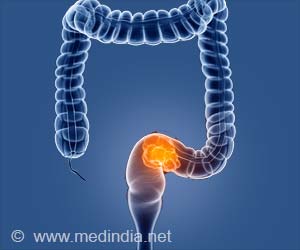Celecoxib and Plumbagin together is delivered in the form of nanoparticles called CelePlum-777. The drug combination may help to treat melanoma.

- Melanoma is a dangerous form of skin cancer that affects men and women.
- A new study finds nanoparticles to be efficient in delivering drugs to treat melanoma.
- Combination of celecoxib and plumbagin together called CelePlum-777 is delivered using nanoparticles to treat melanoma.
The research team used microscopic particles called nanoparticles to deliver drugs to the cancer cells. Nanoparticles are found to be several hundred times smaller than the width of the hair and can be loaded with medications for delivery.
Raghavendra Gowda, assistant professor of pharmacology, lead author of the study, said, "Loading multiple drugs into nanoparticles is one innovative approach to deliver multiple cancer drugs to a particular site where they need to act, and have them released at that optimal cancer cell-killing ratio."
"Another advantage is that by combining the drugs, lower concentrations of each that are more effective and less toxic can be used."
Need for Developing Nanoparticles
Celecoxib and Plumbagin cannot be taken orally. This is because they cannot be used together in a specific ratio through the mouth. And are also found to be toxic to the patients.
The research study is reported in the journal Molecular Cancer Therapeutics and Cancer Letters.
"There is no drug like it in the clinic today and it is likely that the next breakthrough in melanoma treatment will come from a drug like this one."
Findings of the Study
The results of CelePlum-777 intravenous injection in treating melanoma was showed by killing the cancer cells that grow in culture dishes and in tumors that grow in mice.
The drug was found to prevent the tumor development in mice without any possible side effects. It was also found to prevent proteins from enabling the uncontrolled cancer cell growth.
The Penn State has patented the discovery of nanoparticles to treat Melanoma and it is also licensed to Cipher Pharmaceuticals. Further, research is required by the Food and Drug Administration (FDA) for testing CelePlum-777 before carrying out clinical trials in humans.
Melanoma
Melanoma is a most dangerous form of skin cancer that occurs due to unrepaired DNA damage to the skin cells.
Around 10,130 people in the United States die every year due to melanoma.
According to the World Health Organization (WH0), around 2 - 3 million non-melanoma skin cancers and 132,000 melanoma skin cancers are found to occur every year in the world.
Interesting Facts on Melanoma
- Melanoma is the second most common cancer in men and women.
- It usually starts in the form of a mole and can be removed if detected early.
- The average age of diagnosing melanoma is around 50 years.
- Melanoma is capable of spreading more quickly than other skin cancers.
- Intense sunlight for long periods of time should be avoided to prevent melanoma.
- 11 Facts About Melanoma - (https://www.dosomething.org/us/facts/11-facts-about-melanoma)
- Melanoma - (http://www.skincancer.org/skin-cancer-information/melanoma)
- Skin cancers - (http://www.who.int/uv/faq/skincancer/en/index1.html)
Source-Medindia












